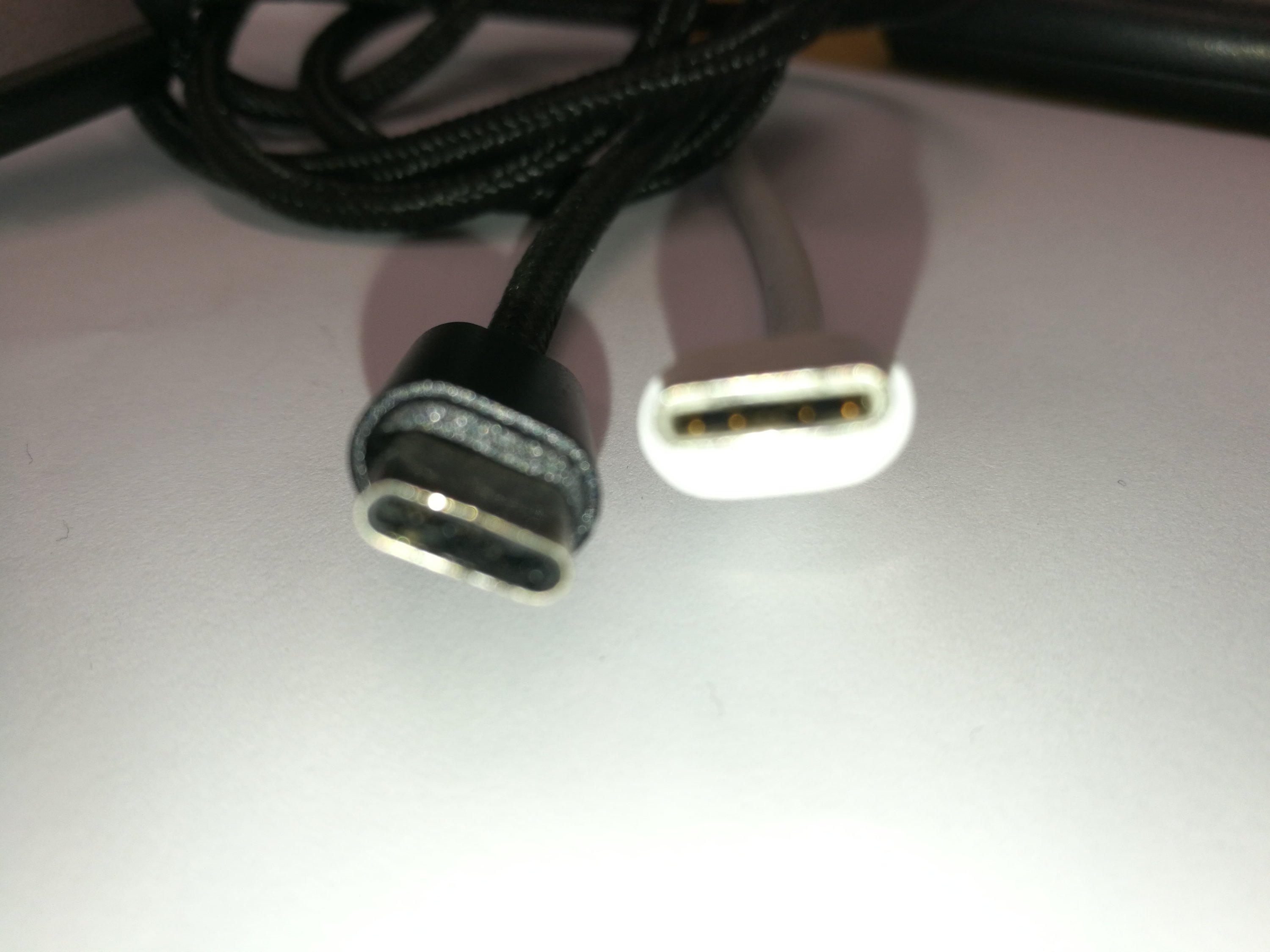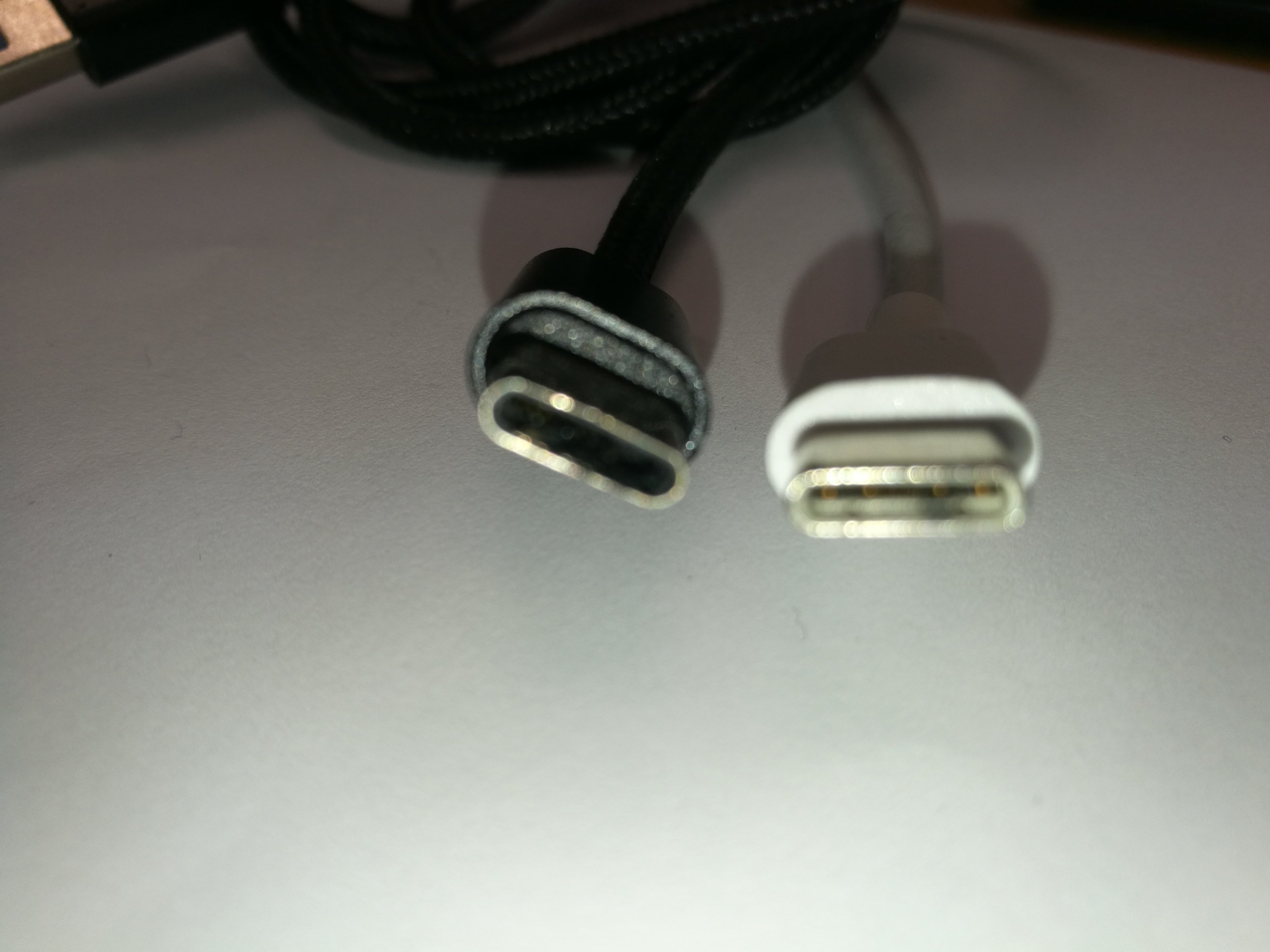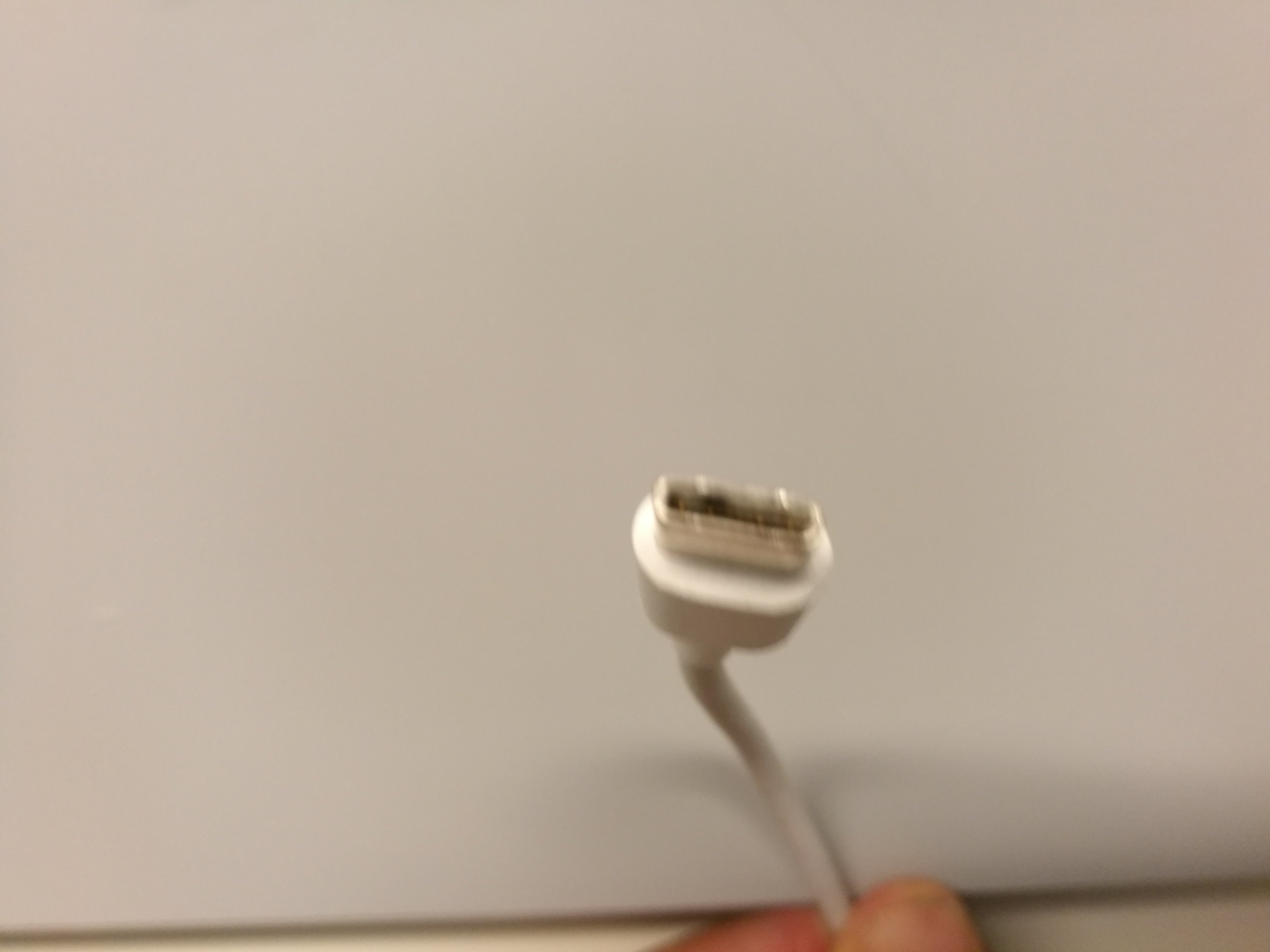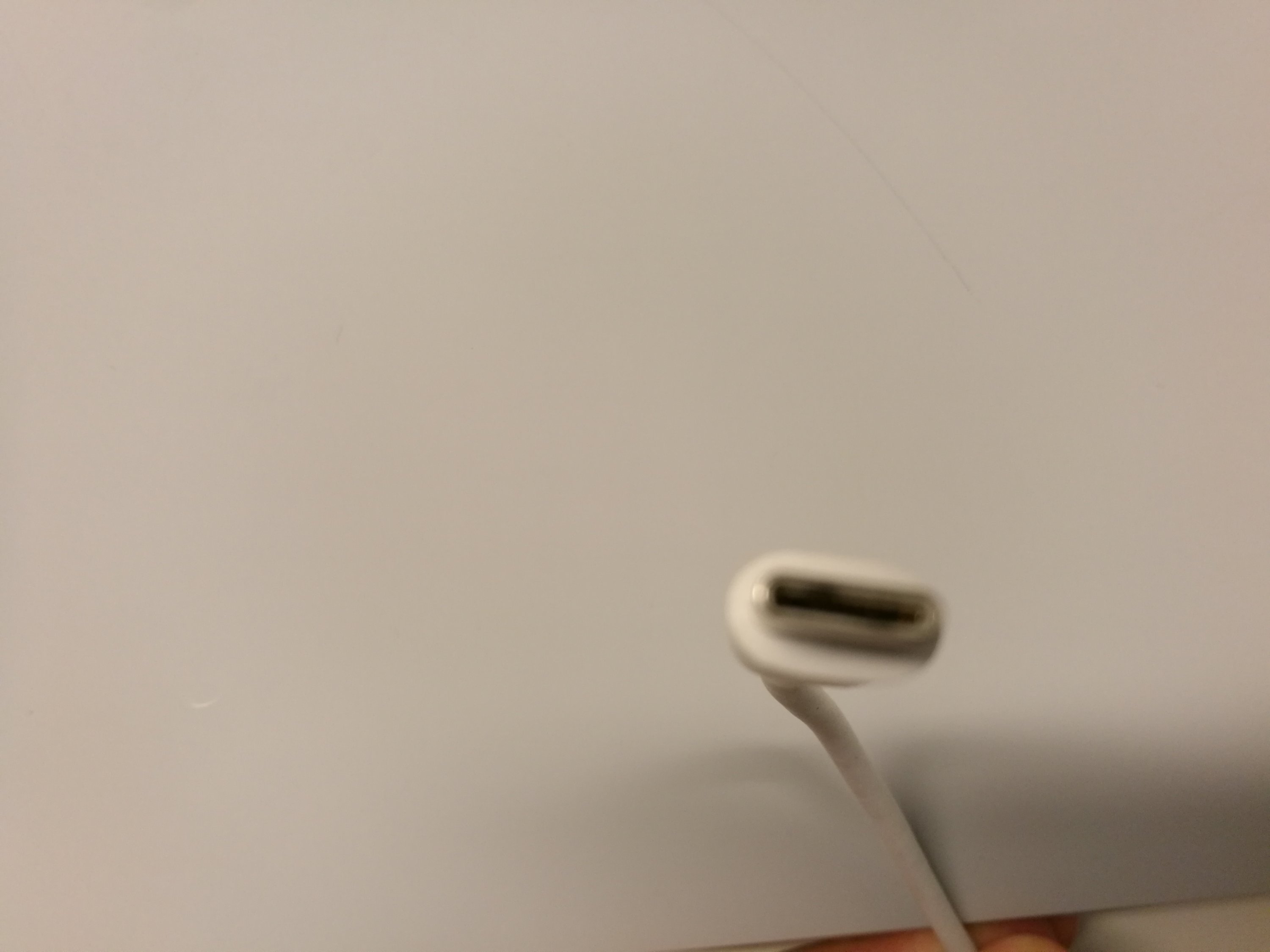USB type C connector is becoming more and more common in many devices. It is now a very common charging interface for modern smart phones.
Generally USB C is more convient and more robust than micro-USB connector. But in those rare cases when something goes wrong, effect can be more severe.
Where microUSB chargers normally used 5V charging at maximum around 2A current, USB C charging generally used higher voltages (5V, 9V, 12V being common and up to 20V possible and higher current (up to 5A). Higher voltage and more current means more damage to tiny connector and electronics.
Here are some examples of damaged USB C charging/data cables. Note the black spots inside the connector.
I heard that the damage was started by trying to charge a wet smart phone with a charge cable. The end result was two damaged cables and one damaged smart phone (fortunaly those were not mine or mistake).


More details


Money saving tip: Make sure your devices dry when attempting to charge them.
4 Comments
Tomi Engdahl says:
Implementing a better design approach to fault detection in USB-C cables
https://www.edn.com/design/analog/4461300/Implementing-a-better-design-approach-to-fault-detection-in-USB-C-cables-?utm_source=newsletter&utm_campaign=link&utm_medium=EDNConsumerElectronics-20181128
Wireless device users have long preferred options that give them the ability to charge their devices quickly. At the same time, they don’t want to have to worry about the potential danger associated with the higher power levels that fast charging requires. Cables with USB connectors are most commonly used for these charging applications. Traditionally, polymeric positive temperature coefficient (PPTC) devices or mini breakers have been designed into the connectors to provide over-temperature protection for the cables. With the development of USB Type-C (USB-C) and USB Power Delivery (USB-PD) specifications and the higher levels of power they support (up to 100 W), these solutions must be reexamined.
Tomi Engdahl says:
Everything Wrong With USB-C Cables | Untangled
https://www.youtube.com/watch?v=QmgpcG_1cuI
USB-C has caused a lot of confusion. As Apple and other companies push to include only USB-C ports consumers are left with a lot of headaches. Two USB-C cables that look the same can transfer data and power at different speeds. And not all USB-C to headphone jack adapters are compatible. It’s time to clear up the confusion and find the right cable for your device.
Tomi Engdahl says:
USB-Type C Connection Overheating Damage Protection
Today’s consumers expect fast, safe charging USB Type-C connections for their portable devices, spurring demand for solutions that protect connections from overheating damage. PolySwitch® setP™ temperature indicators offer the smallest, most energy-efficient solution, making it simpler than ever to protect people and their mobile electronics.
setP™ Series – setP™ – Digital Temperature Indicator
https://www.littelfuse.com/products/temperature-sensors/digital-temperature-indicators/setp.aspx?utm_source=techbriefs&utm_medium=eblast&utm_campaign=mob
The Littelfuse setP™ temperature indicator helps protect USB Type-C plugs from overheating. It has been designed to the unique specifications of USB Type-C and is capable of helping to protect even the highest levels of USB Power Delivery.
Tomi Engdahl says:
USB-C has won praise for its symmetrical design and capability, and drawn criticism for the many different standards and capabilities of any given port or cable.
How do you deal with the proliferation of standards now at play?
USB-C: ONE PLUG TO CONNECT THEM ALL, AND IN CONFUSION BIND THEM
https://hackaday.com/2019/07/29/usb-c-one-plug-to-connect-them-all-and-in-confusion-bind-them/
Trying to be all things to all devices through these multiple valid data speeds and power levels makes for a total combination of six different ways to build a spec compliant cable. This complicates the testing matrix of developing a USB-C device. Not only because lower-spec cables may not work when a higher-spec is required, but also because of situations where non-compliant implementations mean a higher-spec cable would not work even though a lower-spec cable did. (Such as with the initial faulty batch of Raspberry Pi 4.)